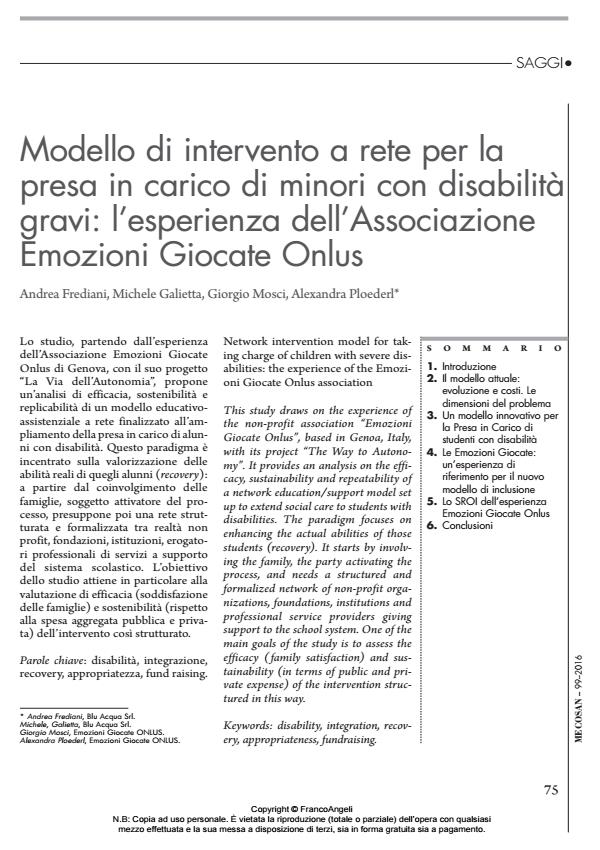Network intervention model for taking charge of children with severe disabilities: the experience of the Emozioni Giocate Onlus association
Journal title MECOSAN
Author/s Andrea Frediani, Michele Galietta, Giorgio Mosci, Alexandra Ploederl
Publishing Year 2017 Issue 2016/99
Language Italian Pages 24 P. 75-98 File size 23811 KB
DOI 10.3280/MESA2016-099004
DOI is like a bar code for intellectual property: to have more infomation
click here
Below, you can see the article first page
If you want to buy this article in PDF format, you can do it, following the instructions to buy download credits

FrancoAngeli is member of Publishers International Linking Association, Inc (PILA), a not-for-profit association which run the CrossRef service enabling links to and from online scholarly content.
This study draws on the experience of the non-profit association "Emozioni Giocate Onlus", based in Genoa, Italy, with its project "The Way to Autonomy". It provides an analysis on the efficacy, sustainability and repeatability of a network education/support model set up to extend social care to students with disabilities. The paradigm focuses on enhancing the actual abilities of those students (recovery). It starts by involving the family, the party activating the process, and needs a structured and formalized network of non-profit organizations foundations, institutions and professional service providers giving support to the school system. One of the main goals of the study is to assess the efficacy ( family satisfaction) and sustainability (in terms of public and private expense) of the intervention structured in this way.
Keywords: Disability, integration, recovery, appropriateness, fundraising.
Andrea Frediani, Michele Galietta, Giorgio Mosci, Alexandra Ploederl, Modello di intervento a rete per la presa in carico di minori con disabilità gravi: l’esperienza dell’Associazione Emozioni Giocate Onlus in "MECOSAN" 99/2016, pp 75-98, DOI: 10.3280/MESA2016-099004